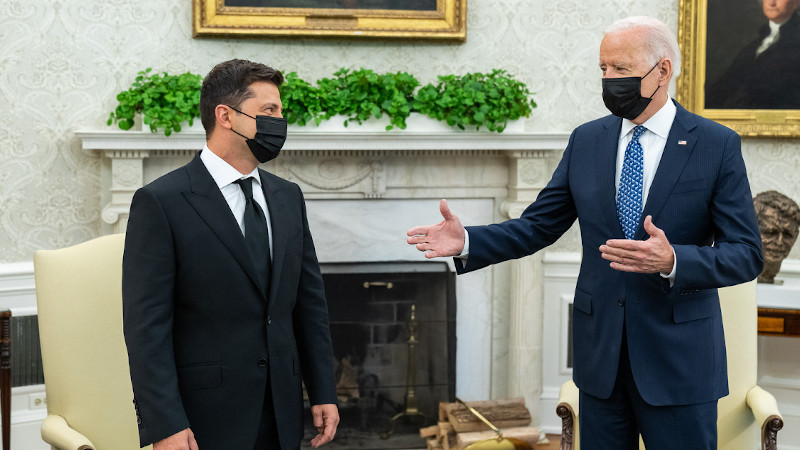
- Select a language for the TTS:
- UK English Female
- UK English Male
- US English Female
- US English Male
- Australian Female
- Australian Male
- Language selected: (auto detect) - EN
Play all audios:
You can be forgiven for wondering why a gathering of the biggest and most consequential figures in American politics today looks like a retirement home. President Donald Trump, aged 73,
spent the past three years being unlike any other American president. He’s sneering and gleefully disrespectful on Twitter. He’s erratic, easily enraged, and defiant of previous traditions
and expectations of presidential behaviour. Yet his odds of re-election are probably somewhere around 50-50. The Senate impeachment trial, deciding whether Trump is to be removed from
office, will wrap up shortly. Trump’s impeachment, and in particular the timing of the trial’s beginning, was directed by the decisions of House Speaker Nancy Pelosi, who turns 80 in March.
Senator Dianne Feinstein, 86, created a bit of drama during the trial when she made comments suggesting she was thinking of acquitting the president — “nine months left to go, the people
should judge.” But she later issued a statement saying she had meant the opposite and that reporters had misunderstood what she meant. The trial is almost certain to end in an acquittal,
driven by Republican senators remaining united behind their leader, Mitch McConnell, who turns 78 later this month. Senate Minority Leader Chuck Schumer (pictured), age 69, is left fuming
about a trial process he deemed unfair. Meanwhile, the Democratic Party is beginning the formal part of its process of selecting its nominee for president; the informal winnowing part
narrowed down a wide field of 29 candidates to . . . in all likelihood, a choice between two snappy septuagenarian men, 77-year-old Joe Biden and 78-year-old Bernie Sanders. But there’s a
slim chance that 70-year-old Elizabeth Warren or Mike Bloomberg, who turns 78 on Valentine’s Day, will surprise us. It wasn’t that long ago that the president was Barack Obama in his 50s and
the House Speaker was Paul Ryan in his 40s. Why is American politics so full of geriatrics? The 2020 Democratic field had plenty of candidates in their 30s, 40s, and 50s. But most of those
figures entered the race with much lower name recognition and established reputations in national politics than Biden and Sanders. For the past decade and a half or so, American politics has
convulsed in a tumultuousness state that made it tougher to follow the traditional path of an American political leader — some role in local or state government, election to statewide
office, winning reelection to a second term, and gradually building a national reputation, year-by-year. The ascent of American presidents in the political system is usually gradual and
steady; look at the careers of Jimmy Carter, Ronald Reagan, George HW Bush, Bill Clinton, George W Bush and Barack Obama. We’ve seen a remarkable series of wave elections in the past decade
or so — from the Democrats taking over the House and Senate in 2006, to Obama’s landslide in 2008, to the Tea Party wave that gave the GOP control of the House of Representatives in 2010.
Obama won a second term, but then Republicans won big in 2014 and 2016. And then in 2018, Democrats won back control of the House and a slew of big governorships. A lot of rising stars saw
their careers interrupted or set back when they lost in those waves. From 2008 to 2016, the Democrats lost 11 Senate seats, 62 House seats, 12 governorships, and 958 seats in state
legislatures. Many of the Democratic “rising stars” who remained and chose to run for president in 2020 hailed from heavily Democratic corners of the country: Kamala Harris in California,
Kirsten Gillibrand in New York, Cory Booker in New Jersey, Julian Castro as mayor of San Antonio. They never had to run hard in contested territory and spent most of their careers courting
voters who were already inclined to agree with them, easily knocking off token opposition. Arguably the only reason Beto O’Rourke generated presidential buzz was because he came reasonably
close to beating Ted Cruz in a Senate race in Texas. Moreover, today’s candidates are running in an extremely different political and media environment than, say, ten years ago. If Booker’s
Obama-esque sunny optimism-and-unity message had debuted in the national stage in 2012, he probably would have thrived. But in 2019 and 2020, Democrats aren’t feeling optimistic and hopeful.
They’re shocked, frightened and angry. When Donald Trump descended the escalator and announced his bid for the presidency on June 16, 2015, he changed how American politics was covered and
discussed. Many candidates had discussed illegal immigration before; in his kick-off speech, Trump characterised it as an invasion of a violent, malevolent horde: “When Mexico sends its
people, they’re not sending their best. They’re not sending you. They’re sending people that have lots of problems, and they’re bringing those problems with us. They’re bringing drugs.
They’re bringing crime. They’re rapists. And some, I assume, are good people.” Trump instantly changed the conversation from “what should be done about illegal immigration” to “what do you
think about what Trump said about illegal immigration?” Most public relations professionals would tear their hair out at a candidate who so explicitly makes himself the issue. But Trump
sucked up all the oxygen in the room — first to the detriment of his GOP rivals, then to the shock of Hillary Clinton, and then to the frustration of anyone who wanted to get anything done
in Washington. (Republican Congressman Paul Mitchell of Michigan announced he would retire after just two terms; he told the Washington Post, “We’re here for a purpose, and it’s not this
petty, childish b******t.”) Trump never stops talking, never stops creating new controversies, never stops provoking, shocking, surprising, replacing one unbelievable news cycle with a new
one that is even more unbelievable. He publicly feuds with his cabinet and leaders of allied countries in ways no American president has before. Nothing is predictable; he will hold summits
hoping for peace with Kim Jong Un, and strike the notorious Qasem Soleimani out of the blue. The economy roars, while white nationalists march through Charlottesville and border patrol
authorities separate parents and children. The sorts of moments and images that would define a normal presidency seem to come at least once a week during Trump’s, and the sheer volume of
news overloads the system. This is an exceptionally difficult environment to go from a little-known political leader to a better-known political leader. Some aspiring presidents, like
Gillibrand and Harris, thought they could establish their identities as the most passionate and adamant foes of Trump. Unfortunately, that wasn’t the standout position in the field — that
was the _default_ position. Biden and Sanders, whatever their flaws, are well-known. Roughly half the Democratic primary electorate began 2019 preferring one of those two men, and roughly
half the Democratic primary electorate begins the actual contest preferring one of the two. Democrats also realise that they’re taking on an incumbent circus ringmaster with a
larger-than-life personality. They fear that pleasant, wonkish, milquetoast personalities like Representative John Delaney and Senator Amy Klobuchar will simply wilt in a one-on-one showdown
against Trump. There are a few young faces that are starting to build national followings. Former South Bend mayor and presidential candidate Pete Buttigieg is just 38, and Representative
Alexandria Ocasio-Cortez is just 30. One of the GOP stars of the impeachment trial is Elise Stefanik is 35, and 40-year-old Missouri Senator Josh Hawley has already turned heads with his
call for sweeping changes to federal regulation of the Internet. But the amount of news column inches, cable news segment time, and sheer mental real estate and voter attention that is
available for a political rising star is limited, and probably will remain limited as long as Trump is president (and perhaps as long as he is alive). Yeats’s “Sailing to Byzantium” began
with the declaration, “That is no country for old men.” The American campaign trail in 2020 is no country for non-septuagenarians.







